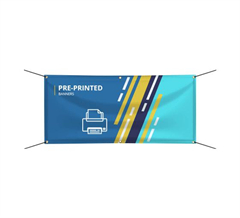Adapting brochures to local cultural sensibilities, also known as adding “local flavor,” is a crucial step in effectively reaching and resonating with diverse audiences. It shows respect for different cultures and helps your brochure connect more deeply with local communities. Here’s how to do it:
- Cultural Research: Understand the cultural norms, values, traditions, and sensitivities of the local community you’re targeting. Research their language, customs, holidays, and communication styles.
- Language and Terminology:
- Translate your brochure into the local language if necessary. Use accurate and appropriate translations to avoid cultural misunderstandings.
- Use terminology that aligns with the local audience’s preferences and avoids language that may be offensive or unfamiliar.
- Visual Imagery:
- Choose images that reflect the local community’s diversity and lifestyle. Avoid using imagery that could be misinterpreted or insensitive.
- Incorporate local landmarks, symbols, and scenery to create a sense of familiarity and connection.
- Cultural Symbols and Colors:
- Use colors and symbols that are culturally meaningful and positive. Be aware of any cultural taboos related to colors or symbols.
- Be cautious when using religious or national symbols to ensure they are used appropriately.
- Design Aesthetics:
- Tailor your design to align with local design preferences. Different cultures may have distinct design styles, so adjust layouts, fonts, and visual elements accordingly.
- Ensure that the design remains visually appealing and balanced while incorporating cultural elements.
- Localized Content:
- Include content that resonates with local interests, concerns, and aspirations. Address specific needs or challenges faced by the local community.
- Showcase how your product or service addresses the needs of the local audience.
- Cultural References:
- Incorporate references to local events, holidays, or traditions. This shows that you are aware of and respect the local culture.
- Use culturally relevant examples and anecdotes to make the content relatable.
- Local Testimonials:
- Include testimonials from local customers or clients. Their experiences can help build trust and credibility within the local community.
- Sensitivity and Respect:
- Be sensitive to cultural nuances, avoiding stereotypes, and respecting cultural differences.
- If unsure about a specific cultural aspect, seek input from local experts or members of the community.
- Inclusivity:
- Highlight your commitment to diversity and inclusivity. Show that your brand values and respects all cultures and backgrounds.
- Feedback and Collaboration:
- Seek feedback from individuals within the local community to ensure your adaptations are respectful and accurate.
- Collaborate with local businesses or organizations to gain insights and endorsements.
- Consistency with Brand Identity:
- While adapting to local culture, ensure that the adaptations align with your brand’s core values and identity.
By adding local flavor to your brochures, you demonstrate cultural awareness, respect, and inclusivity. This approach can help build meaningful connections with local audiences and enhance the effectiveness of your communication.


























